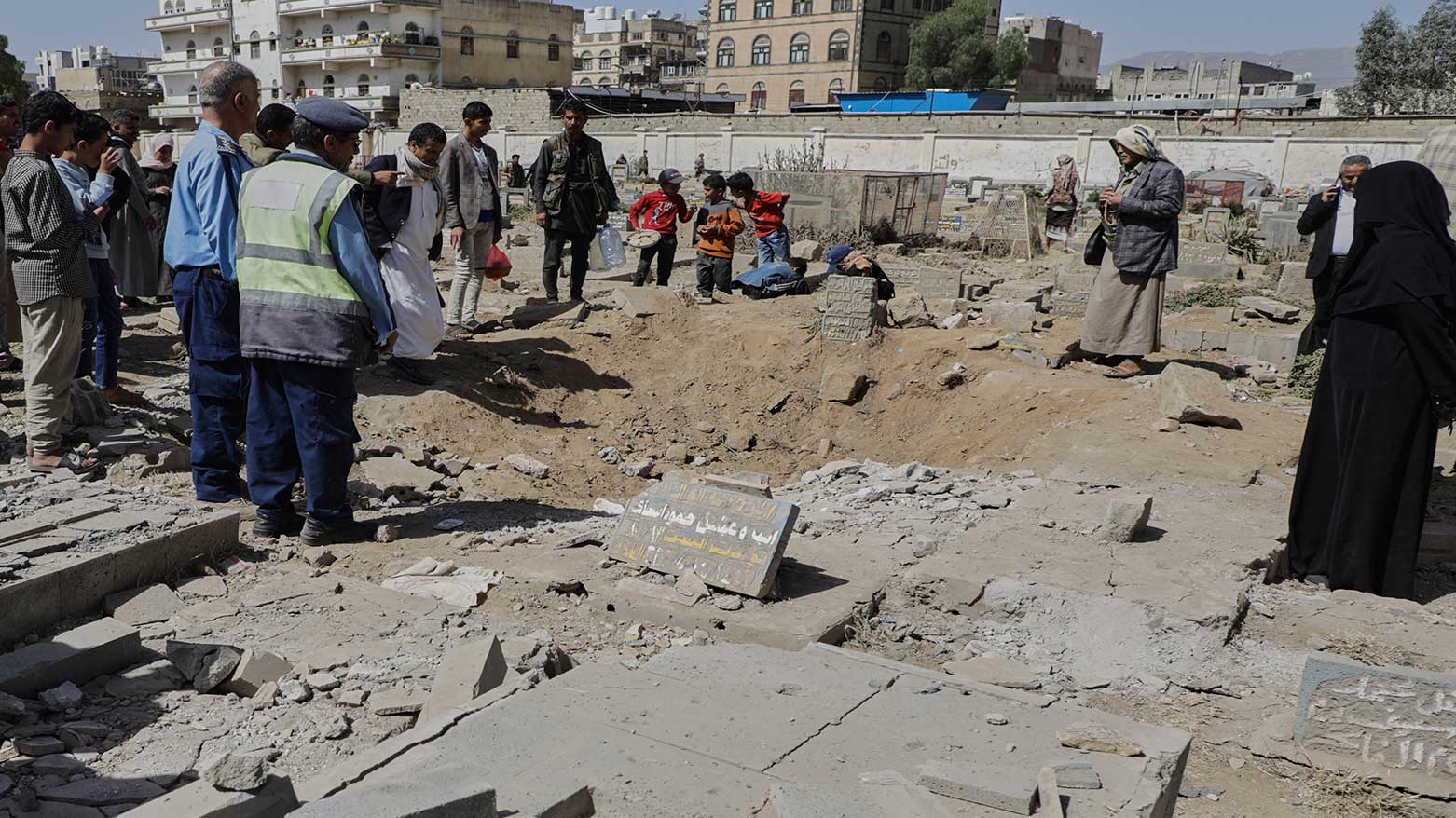12 Dead in U.S. Airstrike on Yemen’s Capital as Intensified Campaign Escalates
The Houthis, who strictly control access to the targeted areas, have also refrained from disclosing full casualty counts or the extent of military losses, further complicating independent assessments.

ERBIL (Kurdistan24) — A U.S. airstrike on Yemen’s capital, Sanaa, has killed at least 12 people and wounded 30 others, according to Houthi rebel sources, marking one of the deadliest single attacks in Washington’s campaign against the Iran-aligned group.
The strike, which occurred early Monday, reportedly hit the Farwa neighborhood market in the Shuub district of Sanaa—an area previously targeted by U.S. forces. Houthi-run media outlet al-Masirah aired graphic footage from the scene, showing destroyed vehicles, damaged buildings, and civilians in distress. One clip appeared to show the body of a child held aloft by frantic onlookers, while others screamed in grief as stretchers were rushed into a local hospital.
Wider Strike Campaign and Mounting Toll
The Sanaa strike is part of a broader, increasingly intense U.S. air campaign across Yemen, with additional strikes reported overnight in Amran, Hodeida, Marib, and Saada governorates. Just last week, a U.S. attack on the Ras Isa fuel port killed at least 74 people and wounded 171, according to Houthi sources.
The Pentagon has not publicly released data on these strikes, making it difficult to independently verify the toll. The Houthis, who strictly control access to the targeted areas, have also refrained from disclosing full casualty counts or the extent of military losses, further complicating independent assessments.
Strategic Drivers Behind U.S. Strikes
The latest strikes come amid renewed diplomatic negotiations between the United States and Iran in Rome over Tehran’s rapidly advancing nuclear program. Washington has tied Iran’s influence to the Houthis’ actions, asserting that the group—considered part of Iran’s “Axis of Resistance”—poses a strategic threat due to its attacks on shipping lanes and Israeli targets.
From November 2023 through January 2024, the Houthis launched attacks on more than 100 merchant ships using missiles and drones, sinking two and killing four sailors. These attacks have drastically reduced traffic through the Red Sea, which usually channels over $1 trillion in global trade annually.
Despite retaliatory U.S. strikes, the Houthis have continued to threaten maritime traffic and Israel. In particular, they vowed renewed attacks on Israeli-linked ships in protest of Israel’s blockade of humanitarian aid to the Gaza Strip.
Policy Shift Under Trump Administration
An analysis by the Associated Press indicates that the current U.S. operation against the Houthis under President Donald Trump—who returned to office following the 2024 election—is more robust and strategically focused than the campaign waged under President Joe Biden. The recent wave of strikes began shortly after the Houthis escalated their threats against maritime vessels, reflecting a decisive shift toward a more proactive and security-driven approach to safeguarding global trade and deterring hostile actions.
As the U.S.-led air campaign continues to focus on dismantling Houthi military capabilities, American officials maintain that every effort is made to minimize harm to civilians. Nevertheless, the Houthis’ ongoing practice of placing military assets and command centers within populated urban areas poses significant challenges. Monday’s incident in Sanaa, where civilian casualties were reported, underscores the complex and dangerous environment in which these operations take place.
24/7 operations for the USS Harry S. Truman (CVN 75) and USS Carl Vinson (CVN 70) against Iran-backed Houthis...#HouthisAreTerrorists pic.twitter.com/zFKb3oCiC4
— U.S. Central Command (@CENTCOM) April 18, 2025
